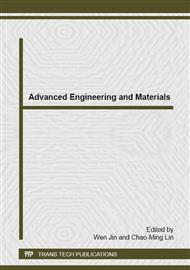[1]
Humphreys F J. A Unified theory of recovery, recrystallization and grain growth, based on the stability and growth of cellular microstructures : I. The basic model [J]. Acta Materialia, 1997, 45 (12) : 4231-4240.
DOI: 10.1016/s1359-6454(97)00070-0
Google Scholar
[2]
Andersen I, Grong O, Ryum N. Analytical modeling of grain growth in metals and alloys in the presence of growing and dissolving precipitates : II. Abnormal grain growth [J]. Acta Metallurgica et Materialia, 1995, 43 (7) : 2689-2700.
DOI: 10.1016/0956-7151(94)00489-5
Google Scholar
[3]
Lee S B, Sigle W, Kurtz W, Ruhle M. Temperature dependence of faceting in 5(310).
Google Scholar
[1]
grain boundary of SrTiO3 [J]. Acta Materialia, 2003, 51 : 975-981.
Google Scholar
[4]
Blankenship. Recrystallization and grain growth in strain gradient samples [J]. Scripta Metallurgica et Materialia, 1994, 31 : 647-652.
DOI: 10.1016/0956-716x(94)90204-6
Google Scholar
[5]
Lee S B, Yoon D Y, Henry M F. Abnormal grain growth and grain boundary faceting in a model Ni-base superalloy [J]. Acta materialia, 2000, 48 : 3071-3080.
DOI: 10.1016/s1359-6454(00)00119-1
Google Scholar
[6]
Rajmohan N, Szpunar J A. An analytical method for characterizing grain boundaries abound growing goss grains during secondary recrystallization [J]. Scripta Materialia, 2001, 44 : 2387-2392.
DOI: 10.1016/s1359-6462(01)00941-1
Google Scholar
[7]
Park J Y, Szpunar J A. Influence of the primary recrystallization texture on abnormal grain growth of goss grains in grain oriented electrical steel [J]. Materials Science Forum, 2002, 408-412 (1) : 821-826.
DOI: 10.4028/www.scientific.net/msf.408-412.821
Google Scholar
[8]
Ning Y Q, Yao Z K, Fu M W, Guo H Z. Recrystallization of the hot isostatic pressed nickel-base superalloy FGH4096 : I. Microstructure and mechanism [J]. Materials Science and Engineering A, 2011, 528 : 8065-8070.
DOI: 10.1016/j.msea.2011.07.053
Google Scholar
[9]
Ning Y Q, Fu M W, Yao W. Recrystallization of the hot isostatic pressed nickel-base superalloy FGH4096 : II. Characterization and application [J]. Materials Science and Engineering A, 2012, 539 : 101-106.
DOI: 10.1016/j.msea.2012.01.065
Google Scholar
[10]
E. Brunger, X. Wang, G. Gottstein. Nucleation Mechanisms of Dynamic Recrystallization in Austenitic Steel Alloy 800H[J]. Scripta Materialia. 1998, 38 (12) : 1843-1849.
DOI: 10.1016/s1359-6462(98)00124-9
Google Scholar
[11]
H. Miura, T. Sakai, H. Hamaji, J.J. Jonas. Preferential nucleation of dynamic recrystallization at triple junctions[J]. Scripta Materialia. 2004, 50 : 65-69.
DOI: 10.1016/j.scriptamat.2003.09.035
Google Scholar


